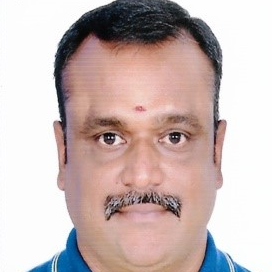Selected Papers from 6th International Conference on Sensors and Electronic Instrumentation Advances (SEIA’ 2020)
A special issue of Sensors (ISSN 1424-8220). This special issue belongs to the section "Intelligent Sensors".
Deadline for manuscript submissions: closed (28 February 2021) | Viewed by 9500
Special Issue Editors
Interests: smart sensors; optical sensors; frequency measurements
Special Issues, Collections and Topics in MDPI journals
Interests: grid computing; security; networking; cloud computing; big data
Special Issues, Collections and Topics in MDPI journals
Special Issue Information
Dear Colleagues,
This Special Issue on ‘Physical and Chemical Sensors’ will contain selected and extended papers from the 6th International Conference on Sensors and Electronic Instrumentation Advances (SEIA' 2020)
The 6th Annual International Conference on Sensors and Electronic Instrumentation Advances (SEIA' 2020) is a forum for the presentation, discussion, and exchange of information and the latest research and development results in both theoretical and experimental research in sensors, transducers, and their related fields. It will bring together researchers, developers, and practitioners from diverse fields including international scientists and engineers from academia, research institutes, and companies to present and discuss the latest results in the field of sensors and measurements.
The SEIA conference is focused on any significant breakthroughs and innovations in sensors, electronics, measuring instrumentation, and transducers engineering advances and their applications with the broadest concepts. The conference is organized by the International Frequency Sensor Association (IFSA)—one of the largest professional, non-profit associations serving the sensor industry and academy for the past 20 years.
The topics of interest include but are not limited to the following:
- Inertial sensors
- Mechanical sensors
- Optical sensors
- Optical fiber sensors
- Chemical sensors
- Electrochemical sensors
- Nanosensors
- Temperature sensors
- Pressure sensors
- Electromagnetic sensors
- Sensor applications
Prof. Dr. Sergey Y. Yurish
Dr. Vijayakumar Varadarajan
Guest Editors
Manuscript Submission Information
Manuscripts should be submitted online at www.mdpi.com by registering and logging in to this website. Once you are registered, click here to go to the submission form. Manuscripts can be submitted until the deadline. All submissions that pass pre-check are peer-reviewed. Accepted papers will be published continuously in the journal (as soon as accepted) and will be listed together on the special issue website. Research articles, review articles as well as short communications are invited. For planned papers, a title and short abstract (about 100 words) can be sent to the Editorial Office for announcement on this website.
Submitted manuscripts should not have been published previously, nor be under consideration for publication elsewhere (except conference proceedings papers). All manuscripts are thoroughly refereed through a single-blind peer-review process. A guide for authors and other relevant information for submission of manuscripts is available on the Instructions for Authors page. Sensors is an international peer-reviewed open access semimonthly journal published by MDPI.
Please visit the Instructions for Authors page before submitting a manuscript. The Article Processing Charge (APC) for publication in this open access journal is 2600 CHF (Swiss Francs). Submitted papers should be well formatted and use good English. Authors may use MDPI's English editing service prior to publication or during author revisions.







